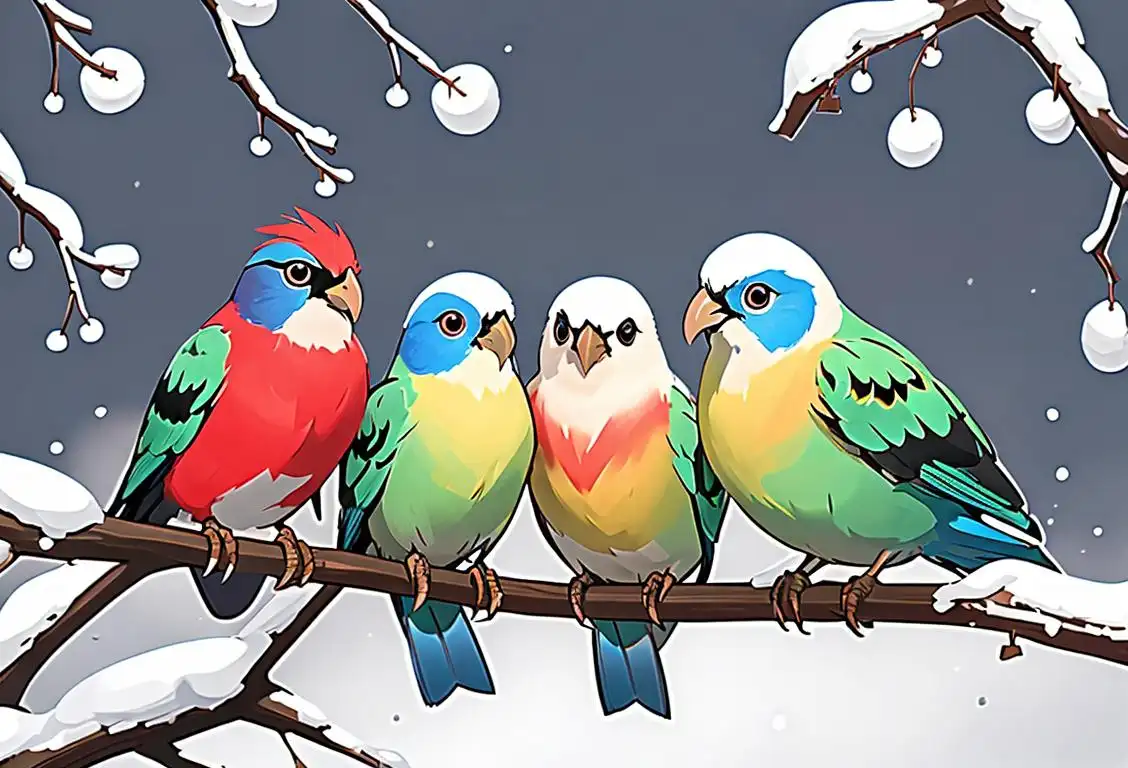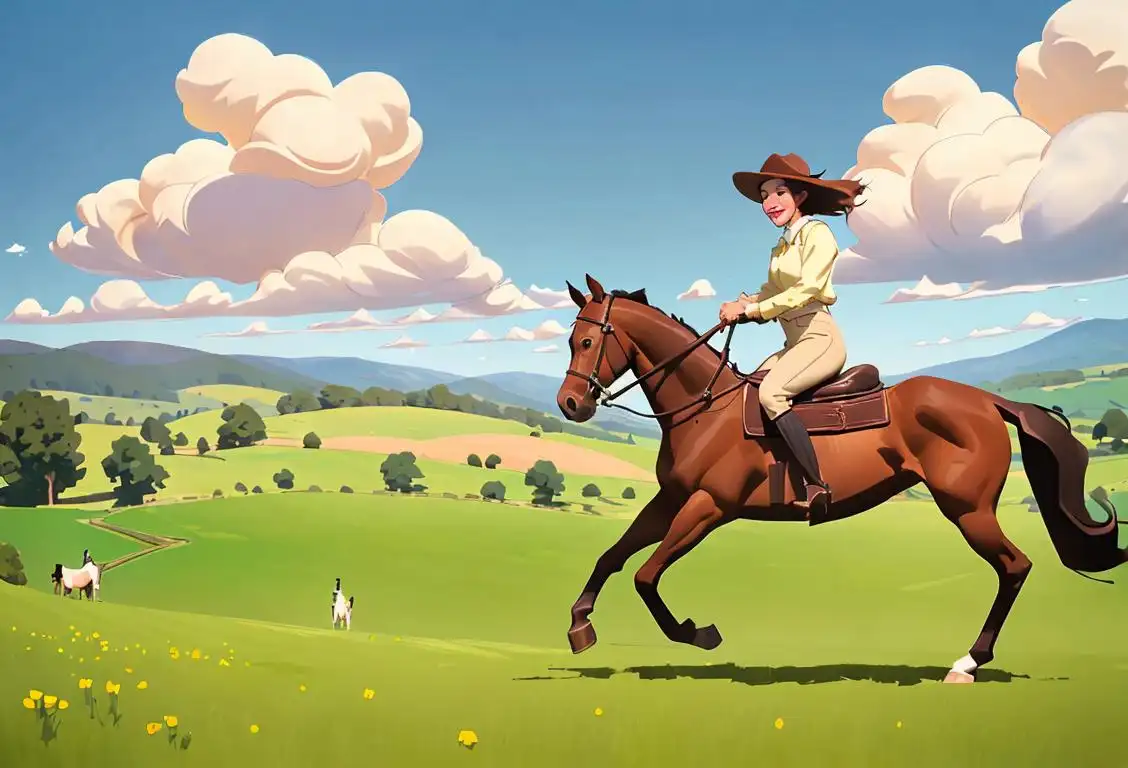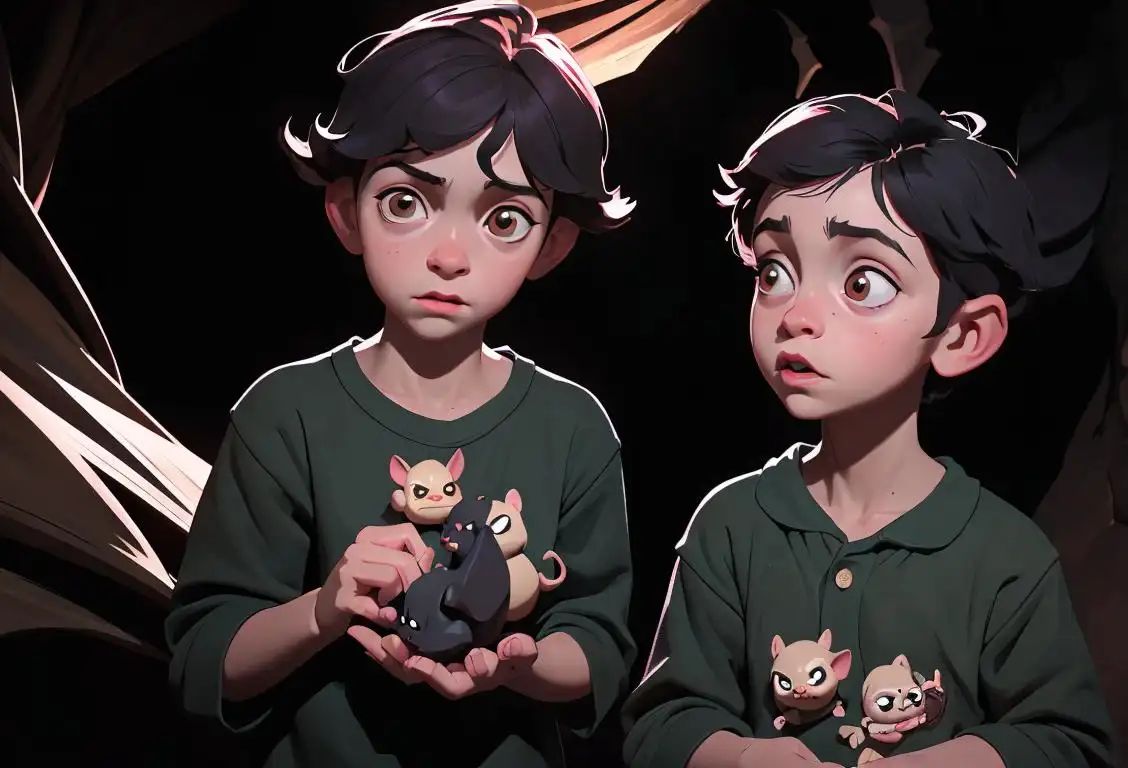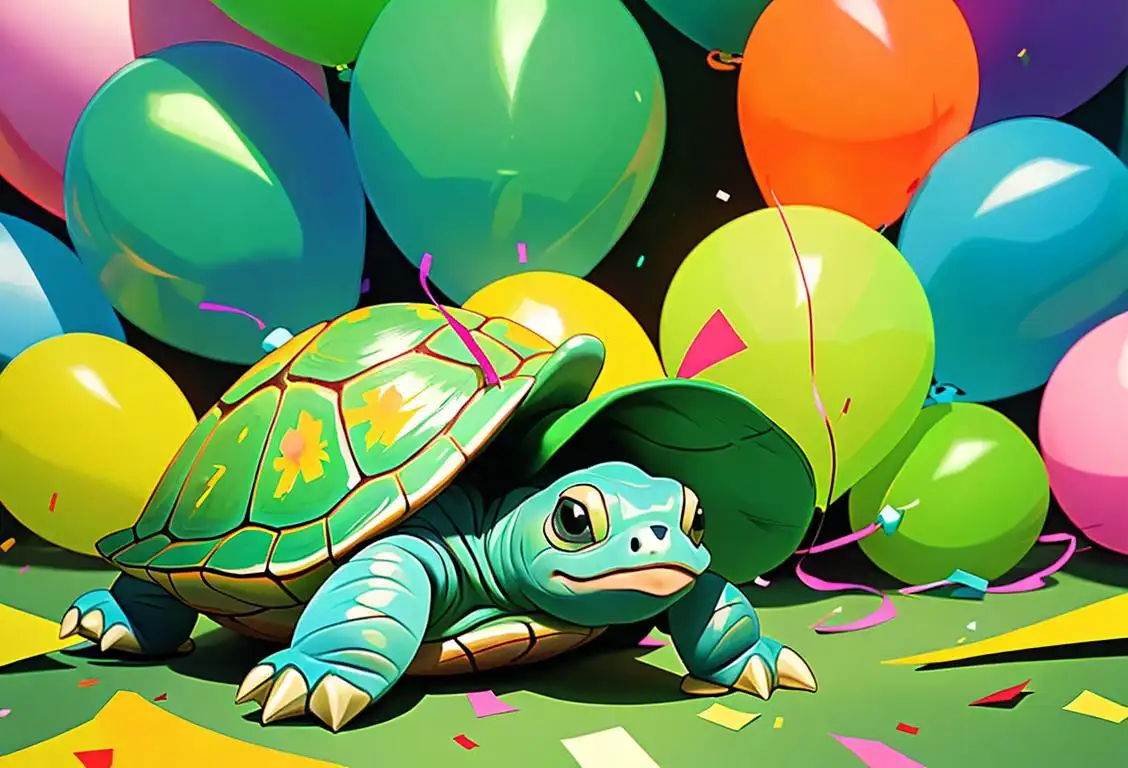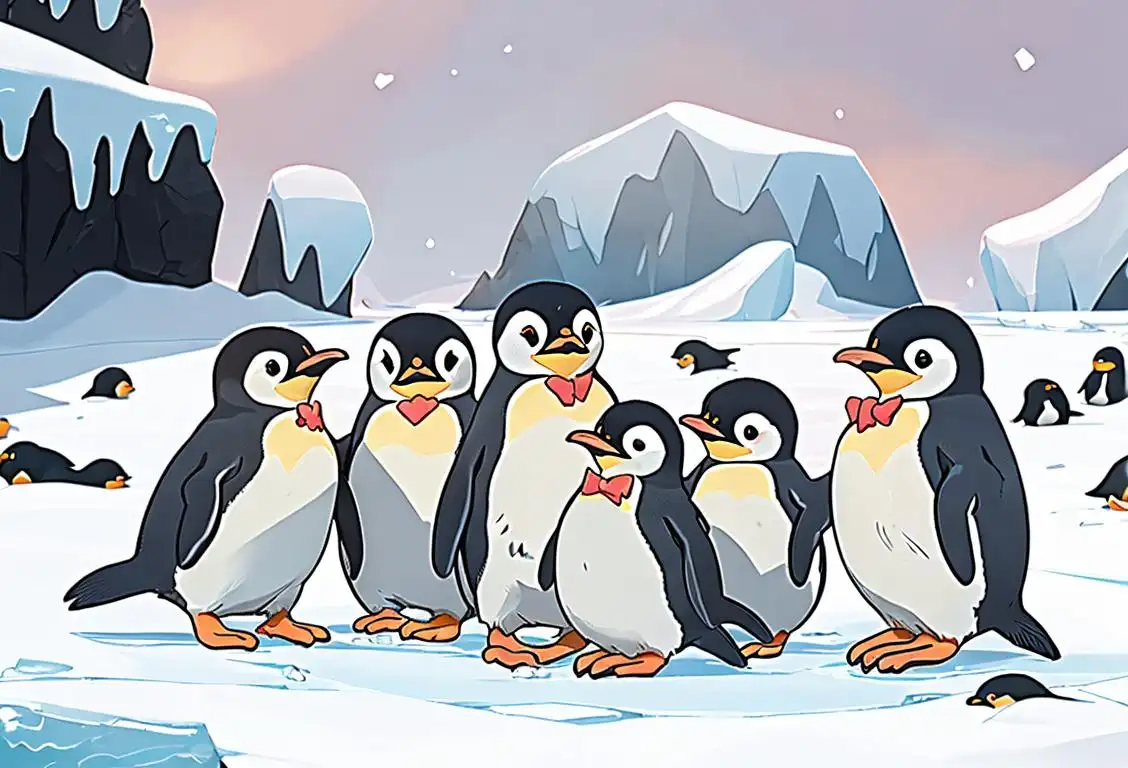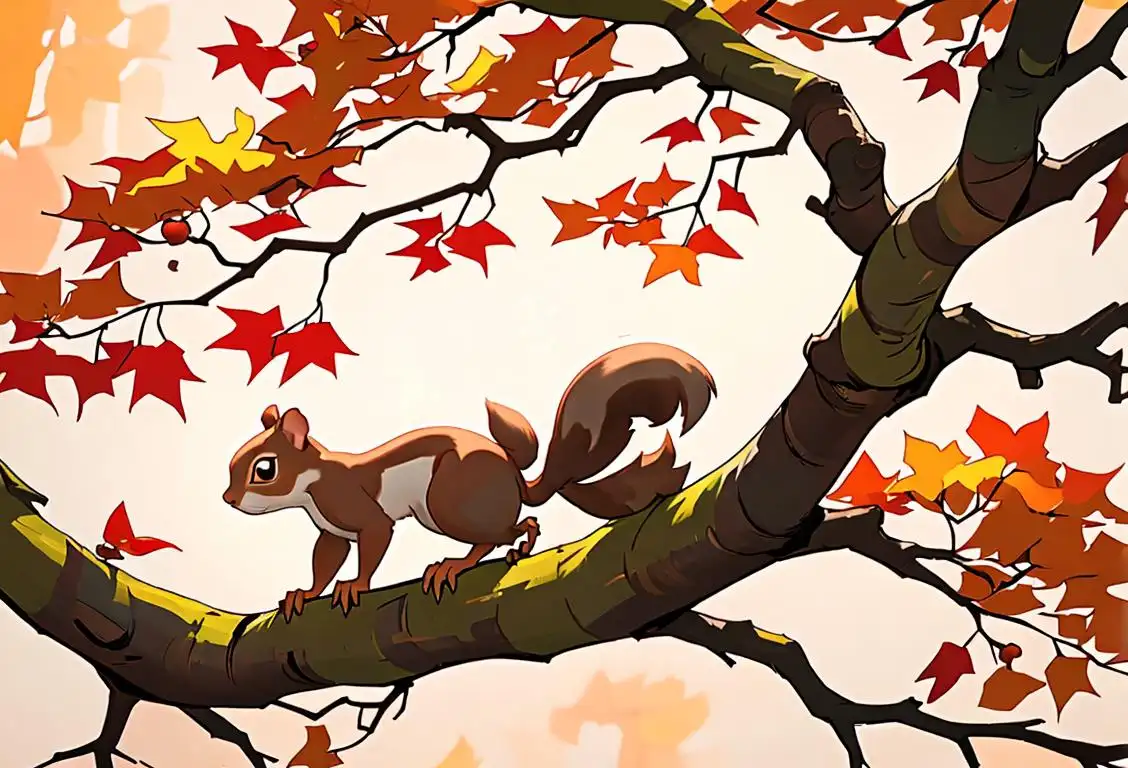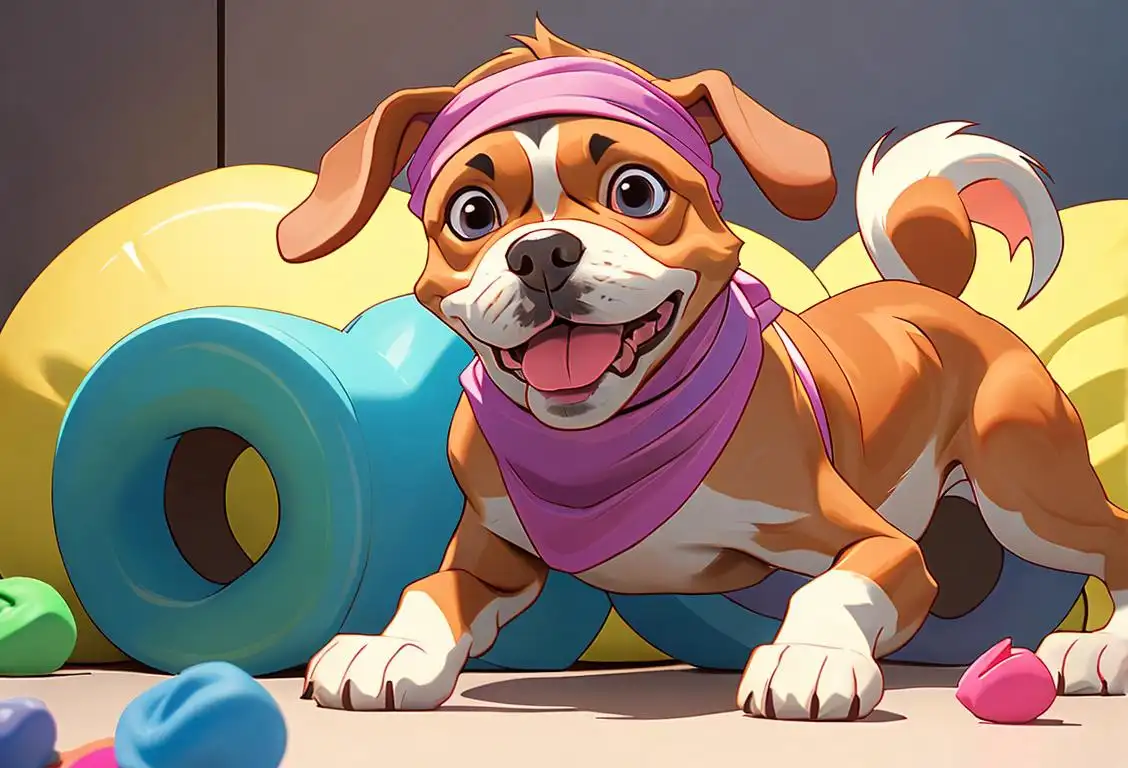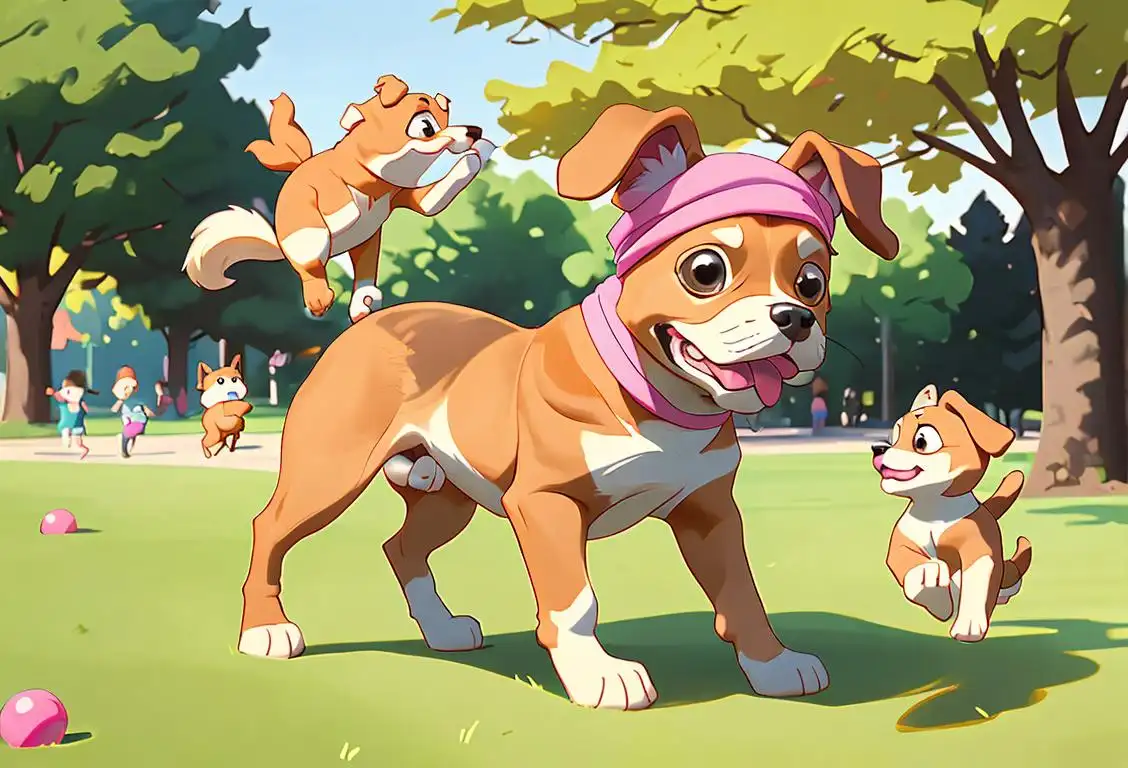National Baby Goat Day
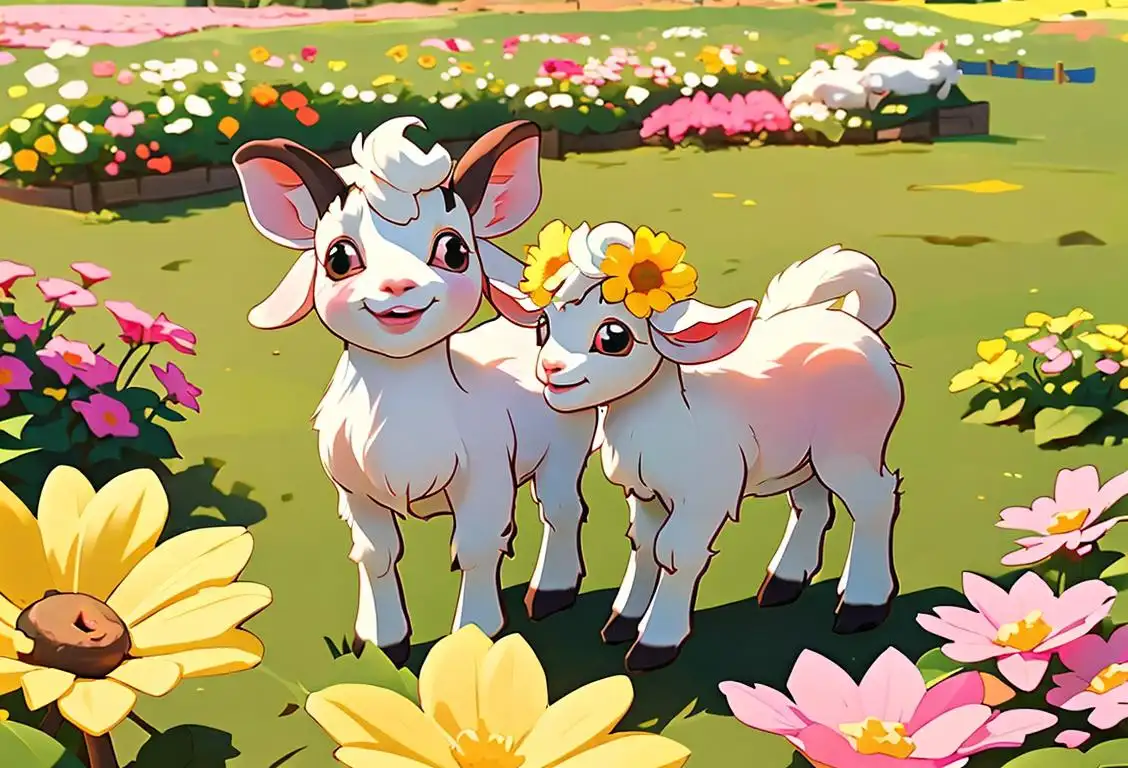
Do you hear that adorable sound? It's the pitter-patter of tiny hooves, because it's National Baby Goat Day! Get ready to immerse yourself in cuteness overload and learn all about these miniature bundles of joy.
When is Baby Goat Day?
It's national baby goat day on the 1st April.
The Internet History of National Baby Goat Day
Picture this: It's a sunny day and you're scrolling through your social media feed, when suddenly, you come across a video of a baby goat frolicking in a field. Instantly, your heart melts and a smile spreads across your face. This is the power of baby goats, my friend. They have conquered the internet with their irresistible charm.
The origin of National Baby Goat Day can be traced back to the early days of the internet. One fateful day, a video of a baby goat named Gizmo went viral. It showcased his playful antics and boundless energy. People couldn't resist sharing the video, and soon, baby goats became the internet's favorite animal.
As the baby goat videos continued to gain popularity, it was only a matter of time before someone decided to dedicate a special day to these adorable creatures. And that's how National Baby Goat Day came to be.
Celebrating National Baby Goat Day
On National Baby Goat Day, it's all about celebrating the cuteness overload that baby goats bring into our lives. Here are a few ways you can honor these pint-sized wonders:
- Visit a local farm or petting zoo that has baby goats. Spend some time cuddling and playing with them. Warning: Be prepared to have your heart stolen!
- Share your favorite baby goat videos or pictures on social media using the hashtag #NationalBabyGoatDay. Spread the cute and make someone smile!
- If you're feeling crafty, create some goat-themed artwork or crafts. You can make adorable goat-shaped cookies or even knit a tiny goat sweater!
Did You Know?
Did you know that baby goats have a special name? They are commonly called "kids." It's both an adorable nickname and an accurate description of their playful and curious nature.
History behind the term 'Baby Goat'
1300
Early Origins
The term 'baby goat' has its roots in the 14th century. The word 'baby' comes from the Middle English word 'babee,' which means infant or young child. On the other hand, 'goat' originates from the Old English word 'gāt,' referring to the domesticated four-legged mammal known for its agility and playful nature.
5000 BCE
Earliest Domestication
The term 'baby goat' finds its origins in the early domestication of goats around 5000 BCE. Goats were one of the first animals to be domesticated for agricultural purposes, mainly for their milk, meat, and wool. As humans formed a closer relationship with goats, they needed a term to describe the young offspring of these domesticated animals, which eventually became known as baby goats.
Old English
Origin of the term 'kid'
The term 'kid' has its roots in Old English, where it was used to refer to the young of various animals. Over time, it specifically came to be associated with the young of goats. The word 'kid' eventually became a common word to describe a young goat, indicating the beginning of the association between the term and the animal.
7000 BCE
Early domestication
The history of the term 'baby goat' dates back to around 7000 BCE when humans first began domesticating goats. Goats were one of the first animals to be tamed by humans for their milk, meat, and fiber. As humans observed and interacted with these animals, they began to develop specific terms to refer to different stages of a goat's life, including the term 'baby goat.'
1600
The Rise of 'Kidding'
In the 17th century, a new term emerged to describe baby goats: 'kid.' This word was derived from the Middle English word 'kidde,' which specifically meant a young goat. The term 'kid' became widely used and is still popular today when referring to baby goats.
16th Century
Introduction of the term 'neatling'
During the 16th century, a new term emerged to describe a baby goat - 'neatling'. This word derived from the Old English word 'neat', which referred to a bovine animal. 'Neatling' specifically meant a young or small neat, and was used predominantly in rural areas. Despite its usage, 'kid' remained a popular and widely recognized term for baby goats.
1500 BCE
Ancient Egyptian Connection
In ancient Egypt, goats held a significant cultural and religious importance. Baby goats were often depicted in ancient Egyptian artwork and were associated with fertility and rebirth. They were also commonly sacrificed in religious rituals. The term 'baby goat' gained prominence during this time as a result of the close relationship between goats and the ancient Egyptian civilization.
1500s
Origins of the term 'kid'
In the 1500s, the term 'kid' emerged as a common word to describe a young goat. The word 'kid' came from the Middle English word 'kide,' which was derived from the Old Norse word 'kith.' As goat farming became more widespread, 'kid' became the commonly used term to refer to a baby goat in English-speaking countries.
1800
The Adorability Factor
During the 19th century, baby goats became increasingly popular for their adorable appearance and playful demeanor. People started using the term 'baby goat' more frequently to highlight their endearing qualities. The combination of the words 'baby' and 'goat' emphasized the youthfulness and cuteness of these animals.
18th Century
Incorporation of the term 'kid' in reference to human offspring
By the 18th century, the term 'kid' started to extend its usage beyond goats. It began to be used colloquially to refer to human children as well. This expansion of meaning showcased the association between the innocence, playfulness, and endearing nature often attributed to animal kids and young humans. Today, 'kid' is still commonly used to refer to children, while retaining its original meaning for baby goats.
1800s
'Nanny goat' and 'billy goat'
During the 1800s, the terms 'nanny goat' and 'billy goat' came into usage to differentiate between female and male adult goats, respectively. These terms were also used to describe the parents of baby goats. The term 'nanny' was borrowed from the word 'nanny,' which means a female human caregiver. Similarly, 'billy' was derived from the nickname for William and used to refer to the male parent.
14th Century CE
The Transition to 'Kid'
During the 14th century, the term 'kid' began to emerge as an alternative word to refer to baby goats. The Old Norse word 'kidh' meaning 'young goat' influenced the transition from 'baby goat' to 'kid'. As English language evolved, 'kid' became the more commonly used term, while 'baby goat' continued to have its place as a descriptive phrase.
20th Century
Introduction of the term 'baby goat'
During the 20th century, the term 'baby goat' gained popularity as an alternative way of referring to young goats. This term highlights the youthful and adorable nature of the animals, emphasizing their similarities to human babies. It also helps to explicitly differentiate them from adult goats. 'Baby goat' has since become a widely recognized term, used in various contexts including farming, petting zoos, and popular culture.
1900
Cultural References
In the early 20th century, various cultural references in literature, cartoons, and popular media further popularized the term 'baby goat.' Mention of baby goats in nursery rhymes, children's books, and animated shows solidified the association between baby goats and the term 'baby goat' in the public consciousness.
18th Century CE
Modern Usage
In the 18th century, the term 'baby goat' started to regain popularity, partly due to the rise of naturalistic art and literature that highlighted the charm and innocence of young animals. The expression 'baby goat' gradually became more prevalent in everyday language as a way to evoke a sense of tenderness and cuteness associated with young goats. This usage continues to thrive in present times.
20th century
Term fusion and modern usage
In the 20th century, the terms 'kid,' 'nanny goat,' and 'billy goat' became fused together to create the widely used term 'baby goat.' This term encompasses young goats of both genders and has become the standard way to refer to these adorable creatures. 'Baby goat' gained popularity as people recognized their playful and mischievous nature, making them a beloved symbol of cuteness and innocence.
Present
Continued Usage and Admiration
Today, the term 'baby goat' is widely recognized and used to describe young goats. These animals continue to captivate people with their playful nature and adorable antics. 'Baby goat' has become a universally loved term, representing the charm and innocence that young goats possess.
Did you know?
Did you know that baby goats have a special name? They are commonly called 'kids.' It's both an adorable nickname and an accurate description of their playful and curious nature.Tagged
fun animals memeFirst identified
1st April 2021Most mentioned on
1st April 2021Total mentions
15Other days
Baby Goat Day
Badger Day
Bird Day
Horse Day
Bat Appreciation Day
Turtle Day
Penguin Day
Squirrel Appreciation Day
Dog Dog Day
Pupper Day

